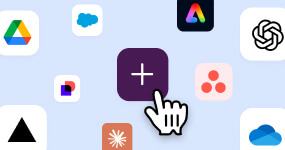In today’s hybrid, fast-paced work environment, project management software isn’t just a nice-to-have — it’s essential. Whether you’re managing client deadlines, internal roadmaps, or cross-functional initiatives, the right tool can make or break your team’s productivity. But with so many platforms promising to streamline your work, how do you know which one will actually fit your needs?
This guide walks you through how to choose project management software, with practical steps to evaluate tools, compare key features, and make a confident, informed decision.
What is project management software?
Project management software is a digital tool that helps you plan, organize, track, and collaborate on projects of all sizes. Whether you’re launching a new product, managing a marketing campaign, or coordinating cross-departmental tasks, this software puts all the most important information in one place — timelines, files, updates, and responsibilities.
Companies use project management software to:
- Build project plans and assign tasks
- Communicate progress and updates in real time
- Share documents and track feedback
- Monitor deadlines, milestones, and budgets
- Generate reports to analyze performance
There’s a big difference between simple task trackers (like to-do list apps) and actual project management platforms. Basic tools might work for individual productivity or small teams, but growing organizations often need advanced features like Gantt charts, resource management, time tracking, integrations, and automated workflows. Choosing the right level of functionality is key to organizational success.
Why choosing the right project management software matters
The project management software you choose can have a direct impact on your team’s productivity and ability to communicate effectively. A good tool helps everyone stay on the same page — with clear deadlines, transparent ownership, and regular updates — so projects move forward without confusion or delay.
The project management software you choose can have a direct impact on your team’s productivity and ability to communicate effectively.
On the flip side, the cost of choosing the wrong tool can be high. A poor fit often leads to low adoption, fragmented communication, and money spent on features your team doesn’t use. When your project management software doesn’t work for your company, your frustrated employees may revert to spreadsheets, emails, or chat threads to try and move projects forward — undoing the very efficiency the tool was meant to bring.
Project management software is a remote work tool and even more important for hybrid or remote environments, where real-time collaboration can’t happen face to face. Instead, your project management software should enable your team to connect, plan, and execute — no matter where they’re located.
How to choose project management software
Whether you’re looking for project management software for start up companies or enterprise teams, selecting the right tool doesn’t have to be overwhelming. By following a clear process, you can confidently find a tool that fits your workflows, supports your organization, and drives better project outcomes. Here’s how to choose project management software step by step.
Step 1. Understand your team’s needs
Start by assessing how your team currently works. Consider the size of your team, the complexity of your projects, and how information flows day to day. Are you managing long-term campaigns, agile sprints, or cross-functional initiatives? Align your tool choice with your broader business goals — whether that’s increasing visibility or scaling project delivery.
Step 2. Determine essential features
List out your must-have and nice-to-have features. Must-haves are non-negotiables like task tracking, due dates, team calendars, and file sharing. Nice-to-haves might include time tracking, custom dashboards, or AI-powered reports.
Step 3. Research and compare options
Once you know what you need, start comparing tools. Use trusted software review sites, ask peers for recommendations, and take advantage of demos and free trials. Evaluate each option based on:
- Pricing and subscription flexibility
- Scalability as your team grows
- Ease of use for both technical and non-technical users
- Customer support, documentation, and training resources
Step 4. Test usability with your team
Before you commit, run a pilot with a real project. Invite a mix of users — project managers, team leads, and collaborators — to try it out. Track how intuitive the interface is, if the features support your workflow, and whether your team feels engaged. Their feedback can help you figure out how well the tool is working and prepare for smooth, long-term adoption.
Step 5. Plan for rollout and adoption
Even the best software won’t succeed without a thoughtful rollout. Plan onboarding sessions, provide how-to resources, and define clear processes for how your team will use the tool daily. For hybrid and remote teams, make sure the tool and trainings are accessible across time zones and devices. Encourage champions within departments who can excite people and answer their colleagues’ questions as they arise.
Features to look for in project management software
Not all project management tools are created equal — and choosing one with the right mix of features can make the difference between chaotic task juggling and effective collaboration. As you evaluate your options, keep an eye out for these essential features:
- Collaboration and communication tools: Look for built-in chat, file sharing, comment threads, and real-time updates. These features help teams stay on the same page, especially when working remotely or across departments, without relying on scattered email chains or missed messages.
- Flexibility and customization: Every team works differently, so your project management tool should adapt to your workflows — not the other way around. Features like custom task statuses, project templates, and flexible views (list, kanban, Gantt) help tailor the platform to your team’s needs.
- Integrations with existing tools: You want a tool that will work with what you already have. Seamless integration with your current tech stack — like Google Calendar, Slack, Microsoft Teams, or cloud storage — reduces context switching and boosts efficiency. It also makes sure your team can keep working in the tools they already know.
- Reporting and analytics: Insightful dashboards and reporting capabilities help you track progress, measure productivity, and identify bottlenecks. Look for tools that offer visual reports and customizable metrics to support better decision-making.
- Security and compliance: Especially for enterprise or regulated industries, strong security features are non-negotiable. Ensure the platform offers role-based access, data encryption, audit logs, and compliance with standards like SOC 2 or GDPR.
- AI automation: Modern tools increasingly offer AI-powered features like task suggestions, deadline predictions, or auto-generated project summaries. These automations can save time, reduce manual updates, and help teams focus on high-impact work.
Learn more: AI Project Management Tips
Common mistakes to avoid when choosing project management software
Even with the best intentions, it’s easy to choose a project management tool that doesn’t deliver the results you expected. Avoiding these common mistakes can save your team time, money, and frustration down the line:
- Choosing based only on cost: While budget matters, the cheapest option isn’t always the best value. Low-cost tools may lack essential features or support, leading to limited adoption and additional costs later when you need to switch platforms. Balance a variety of important considerations instead of simply jumping on the whatever tool is cheapest.
- Overloading teams with unnecessary features: More features doesn’t always mean better. Tools that are overly complex or packed with extras can overwhelm users and slow down workflows. Focus on what your team actually needs to stay productive and aligned.
- Skipping the trial or pilot phase: Never commit to a tool without testing it first. A free trial or pilot project helps you evaluate usability, feature fit, and team feedback in real-world conditions — before you roll it out organization-wide.
- Not planning for adoption and training: Even the perfect tool can fail without a solid onboarding plan. Make sure your team knows how to use the software with training sessions, documentation, and clear usage guidelines to encourage consistent adoption.
Best project management tools
There’s no one-size-fits-all solution, but several project management tools stand out for their flexibility, ease of use, and ability to support different team workflows. Here are some of the most popular platforms to consider, all of which are available with integrations on the Slack Marketplace:
- Trello: Great for visual task tracking with customizable kanban boards.
- Jira Cloud: Ideal for software development teams using agile or scrum methodologies.
- Miro: A collaborative whiteboard tool perfect for brainstorming and planning.
- Notion: Combines task management with documentation and team wikis.
- Asana: Offers structured project planning with timelines, goals, and automation.
- Wrike: Suited for larger teams needing advanced reporting and workload views.
- Flow: A clean, user-friendly option for tracking tasks and projects with simplicity.
- Figma and FigJam: Best for design teams collaborating on visuals and feedback.
- ClickUp: Known for its all-in-one flexibility with customizable workflows.
For a more comprehensive comparison, check out Slack’s full guide to project management software tools.
How Slack supports project management
Slack is a hub for communication and integrates with project management software, so teams stay connected, organized, and on track no matter the project. Whether you’re collaborating in real time or coordinating across time zones, Slack brings all your tools and conversations together in one place.
Here’s how Slack improves your project management workflow:
- Centralized channels for sharing updates, files, and decisions without digging through email threads
- Slack Huddles for quick check-ins, impromptu stand-ups, or brainstorming sessions
- Integrations with top project management tools like Asana, Jira, Trello, and ClickUp to streamline updates and task creation
- Task lists that show deadlines and resources in a way that makes it easy to find
- Workflow automation to set up project reminders, approval chains, or onboarding sequences—no coding required
Choosing project management software FAQs
 |
Try Slack for free todayWhatever work you do, you can do it in Slack. Get the power and alignment you need to do your best work. |






